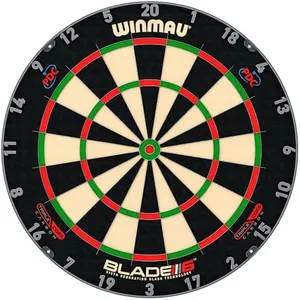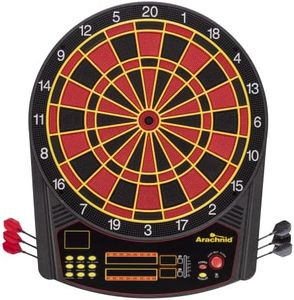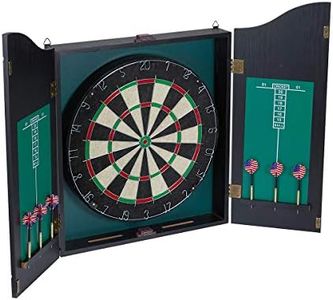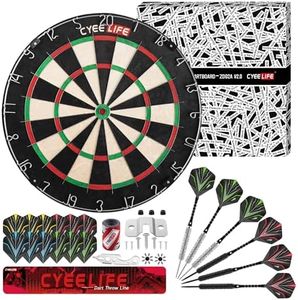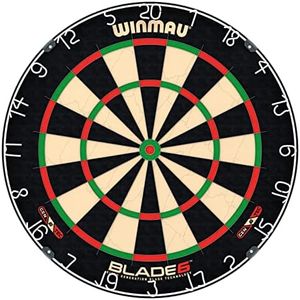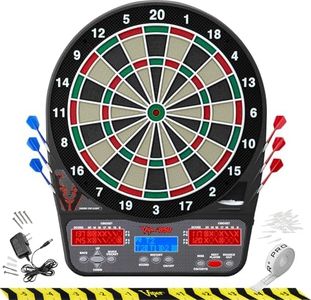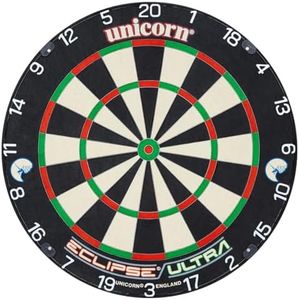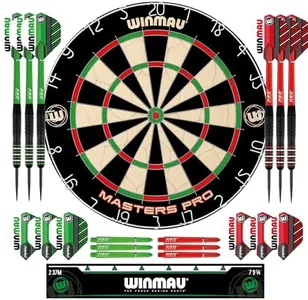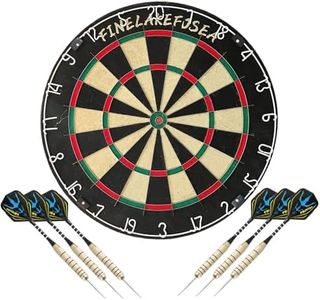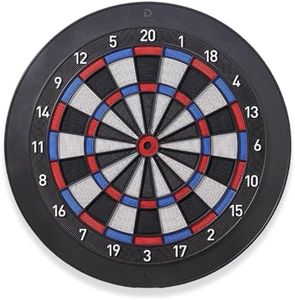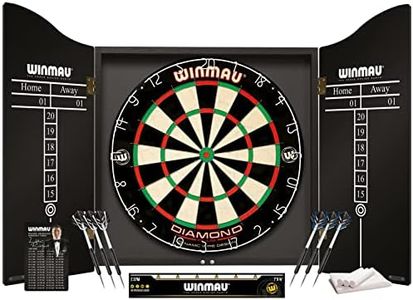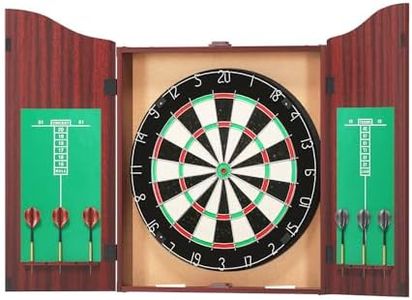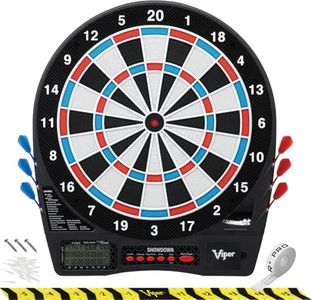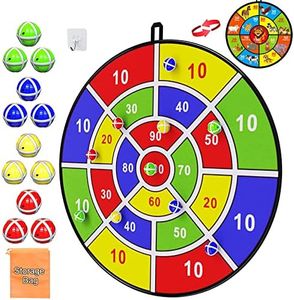We Use CookiesWe use cookies to enhance the security, performance,
functionality and for analytical and promotional activities. By continuing to browse this site you
are agreeing to our privacy policy
10 Best Dart Boards
From leading brands and best sellers available on the web.By clicking on a link to a third party's website, log data is shared with that third party.
Buying Guide for the Best Dart Boards
Choosing the right dart board can make a big difference in how much you enjoy the game, whether you're just starting out or you're a seasoned player. It's important to think about who will use the dart board, where you'll put it, and what kind of darts you plan to play with. Different boards are suited for different styles and skill levels, and picking the right one can help you improve your skills and get the most fun out of the game.Board MaterialThe material of a dart board greatly affects its durability and how the darts stick. The most common materials are sisal fiber (bristle boards), cork, and electronic plastic. Sisal fiber boards are the standard for serious and competitive play, offering great self-healing properties and lasting longer with regular use. Cork boards are softer, cheaper, and usually for casual or children's use, but they wear out quickly. Electronic boards, made of plastic, automatically score the game and are best for soft-tip darts. If you want longevity and authentic play, sisal fiber is recommended; for safety and easier scoring, electronic boards can be better. Match the material to your level of play and who will be using the board most often.
Wiring (Spider) TypeThe wiring, also called the spider, refers to the metal that divides the scoring sections on the board. Traditional round wire and newer thin, blade-style wiring are the two main types. Blade-style wiring is thinner and angled, which helps reduce bounce-outs—an issue where darts hit the wire and fall out instead of sticking. Round wire is more common on cheaper boards and can cause more bounce-outs, but works fine for casual play. If you or your group are focused on scoring accuracy and improving your darts game, look for thinner or blade-style wiring.
Number RingThe number ring is the part of the board that shows the values of each segment. On higher-quality boards, the ring is removable, which allows you to rotate it to prevent certain sections from wearing out faster than others. Fixed number rings are found on more basic boards and can lead to uneven wear. If you want your board to last longer and maintain a consistent playing surface, especially if you’ll be playing often, consider one with a removable number ring.
Size and ThicknessStandard tournament-size dart boards measure 18 inches in diameter and 1.5 inches thick. Smaller or thinner boards are generally used for recreational or children's play. The thicker the board, the better it is at holding darts and preventing bounce-outs. If you’re looking to practice for competitive play or want a more authentic feel, aim for regulation size and thickness. For lighter, more casual use, a smaller and thinner board is acceptable.
Mounting OptionsHow and where you mount your dart board matters for safety and convenience. Some dart boards come with simple wall mounts, others have advanced brackets for stability or freestanding cabinets. Think about your available space and whether you want to move the board around or keep it in a single location. A stable, secure mounting is safer and better for regular use, while portability might be more important if you want to set up in different places.
Type of Darts UsedDart boards may be intended for steel-tip darts (used on bristle and cork boards) or soft-tip darts (used on electronic boards). Steel-tip darts are heavier and require a sturdier board, ideal for traditional play. Soft-tip darts are lighter, safer, and required for electronic boards, making them better for family settings or places where safety is a concern. Make your choice based on who will use the board and whether you prefer classic or electronic play.
